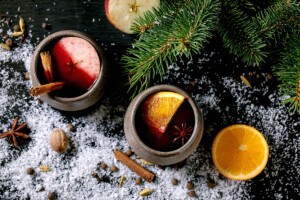Liquid Nitrogen Burgers and Udder-less Cream: What You Missed at Nathan Myhrvold's Harvard Lecture

Myhrvold suggested that cryo-frying is the absolutely best way to make a delicious burger. The liquid nitrogen freezes the outside layer before being plopped into the deep fryer, which prevents the inside from overheating due to the hot oil. The result: a crispy burger on the edges that's a juicy medium rare on the inside. (Photo by Kimya Kavehkar)
Nathan Myhrvold, former CTO of Microsoft, current CEO of Intellectual Ventures and the man behind the whopping six-part cookbook and all-around food science guide Modernist Cuisine, was the latest to lecture at Harvard last night. “Cooking is the only science experiment that most people do,” Myhrvold told us before the lecture. “The reason I wrote this book is to inform the world all these cool things that are possible with science and food.”
In the course of his lecture, Myhrvold discussed dipping burgers in liquid nitrogen, creating gelato sans cream and the staggering stats of his six-volume ode to gastronomy. Herewith, our takeaway.
Myhrvold’s book is bigger than yours.
Myhrvold—who has a P.h.D in Quantum Physics from Princeton, mind you—opened the lecture with a by-the-numbers look at Modernist Cuisine. The six-volume piece contains about 1,500 recipes and 2,438 pages, and it’s printed with four pounds of ink , weighs 42 pounds unpacked, and contains about 3,200 photographs—not your average cookbook.
Rules were made to be broken.
Like most modernist movements such as dance and fine art, modernist cooking seeks to break all the rules, according to Myhrvold. “When you change a convention, people notice and react strongly,” he said of modernist revolutions. “But rules get in our way, and we have to break the rules.” He recalls an incident where he visited a Spanish winemaker and poured his most prized wine in a blender and hit “frappe,” which horrified the winemaker. But when given a blind taste test, the winemaker liked the blended one better, proving that if you take food out of their classical contexts you can come up with some tasty results.
Ditch the dairy to retain flavor.
Myhrvold gave the audience a peek at a 35-course menu he uses for lucky guests, which includes out-there dishes like watermelon chips, dairy-free pistachio gelato and pea butter on walnut toast. The pistachio gelato is created with an emulsion of pistachio oil, water, pistachio solids and sugar—no milk, cream or eggs are used, Myhrvold said, because the dairy/eggs cause the pistachios to lose their flavor. “It’s cream that never went through an udder,” he said. “Yes it involves certain advanced techniques and equipment, but it’s really all about celebrating the pistachio and its pistachio-ness.”
Want the perfect burger? Skip the grill.
Making the perfect burger is as legitimate at making something more elevated like coq au vin, Myhrvold said. But instead of going the typical grilled route, he wanted to find a way to make outermost layer brown and crispy, while leaving the rest medium-rare. To do this, he cooked the meat sous-vide (in a water bath at a low temperature) , quickly dropped the burger in some liquid nitrogen to freeze the outer layer, and then deep fried it. Bet you can’t wait to break out the liquid nitrogen at your next backyard bbq.—Kimya Kavehkar
Related Harvard Lectures on Chowder:
David Chang
Wylie Dufresne
Jose Andres
Grant Achatz
For more online food coverage, find us on Twitter @ChowderBoston


